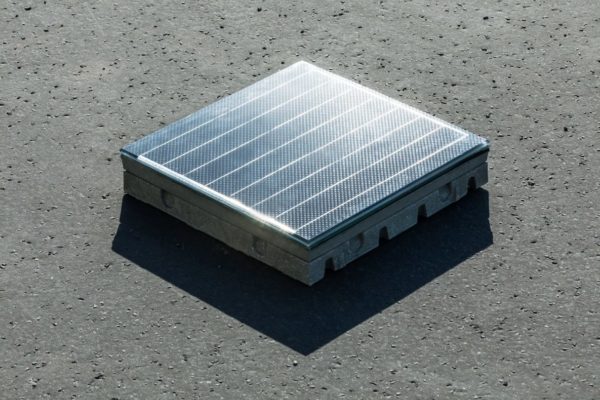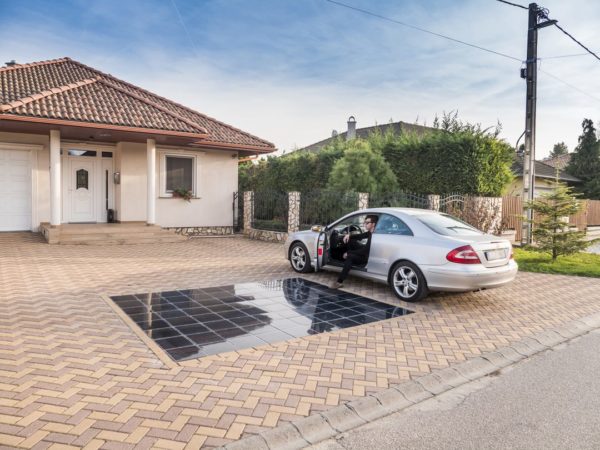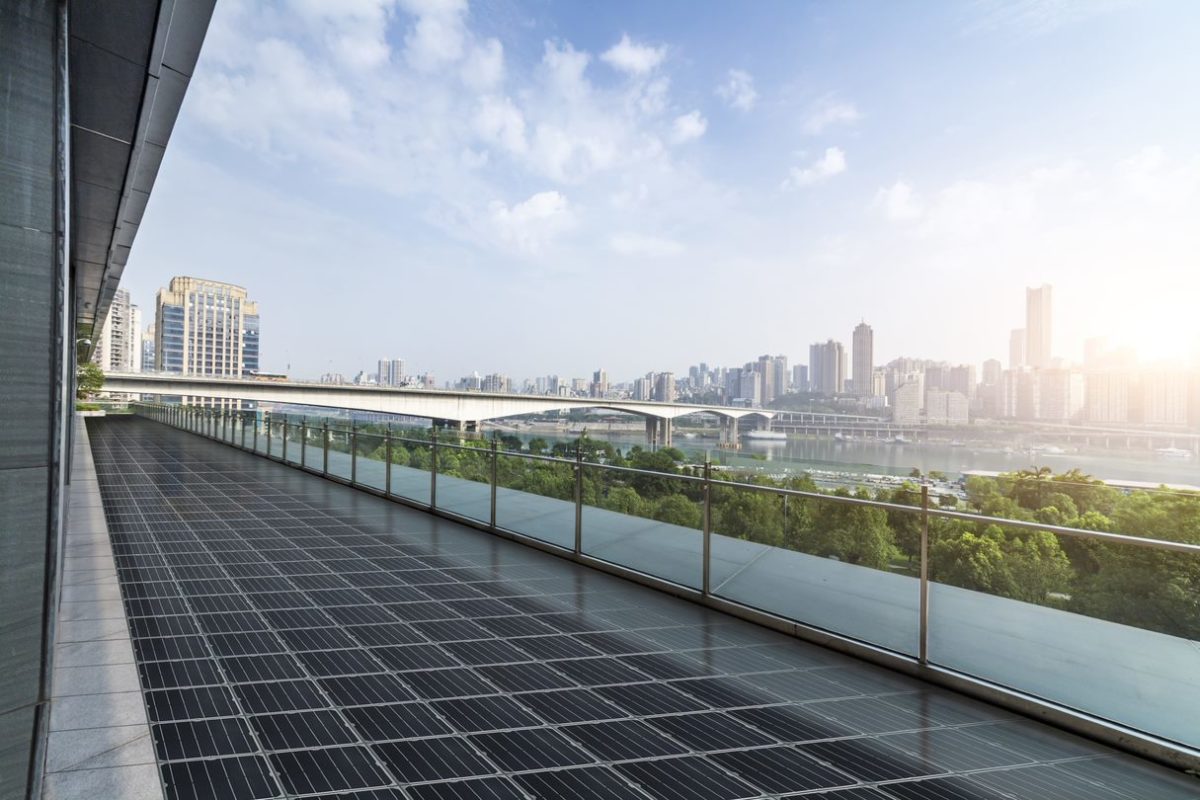Hungarian tech company Platio has developed a new kind of solar pavement that could be used for outdoor applications in urban environments, homes, office buildings, shopping malls, and public infrastructure projects.
The pavement can operate at safe low voltages and can be assembled with 8.6 kg walkable solar tiles, known as Platio Solar Pavers. They consist of anti-slipping hardened tempered glass, a solar cell array, and a layer made of recycled polymer composite. 
The 34x34x6.1 cm tile has four 15.6×15.6 cm cells for each module and a silicon nitride anti-reflection coating. The polycrystalline version of the cell has a nominal power of 158 W per square meter and an efficiency of 18.6%. The monocrystalline version has power output of 186 W per square meter and a 22.0% cell efficiency.
The cells are common commercial devices, sourced from an undisclosed supplier.
“The consumer selling price of each paver is determined by our partners, but our proposed list prices can vary between €50 and €80 per unit depending on the product type, quantity and market,” the company's marketing manager, David Csende, told pv magazine.
In terms of mechanical stress on the panels, the pavement can handle the burden of occasionally crossing or parking vehicles as well.
“In order to achieve the greatest possible resistance against mechanical forces the elements resemble the construction of paving blocks rather than solar panels,” Csende explained. “The load-bearing layer is a recycled  plastic composite with even more favorable physical properties than concrete. This makes the surface suitable even for vehicle traffic, despite the fact that the product is mostly intended for pedestrian areas.”
plastic composite with even more favorable physical properties than concrete. This makes the surface suitable even for vehicle traffic, despite the fact that the product is mostly intended for pedestrian areas.”
The tiles are available in four different colors, including ocean blue, midnight black, purple and green. Modular installation is fast and easy to accomplish, the company claims, noting that it is similar to conventional tiling. Platio said that the pavement can also be connected to recharging stations for electric vehicles.
The pavement include a five-year warranty. The company produces the components at a facility in Hungary.
This content is protected by copyright and may not be reused. If you want to cooperate with us and would like to reuse some of our content, please contact: editors@pv-magazine.com.




What about shading?
I have a 50 sqm sized patio.
(a) What would be the cost ( including installation and provision of storage bank) for such flooring ?
(b) What would be the average electrical output on a sunny day? ( I live in Maharashtra, India, where 2/ 3 part of the year days are sunny. )
Please! Don’t buy into this idea. Dave from EEV Blog Debunked Solar Road Ways many times!
It is sub optimal. BIPV, Rooftop, over parking, over agricultural lands in vast majority of cases will have cheaper price, longer lifespan with higher production rates. Therefore also lower CO2 footprint!
Yes and no.
Solar road might not be the best idea for energy production now, but it could have it’s utility where land is not sufficient like in Netherlands or Japan, especially for private companies who are asked by law to use x% of renewable energy : how do you proceed when your rooftop is already covered by regular PV?
Another thing which is important : the research behind these panels is interesting, especially those that are sufficiently resistant to protect solar cells and handle car traffic : once you got such a technology you can use it to embed sensors or digital signage for example.
So yes that’s not the most efficient way to produce energy, but it might still have some applications and the research behind can led to new kind of applications.